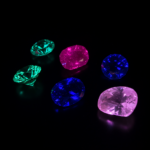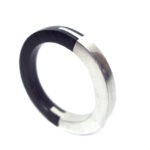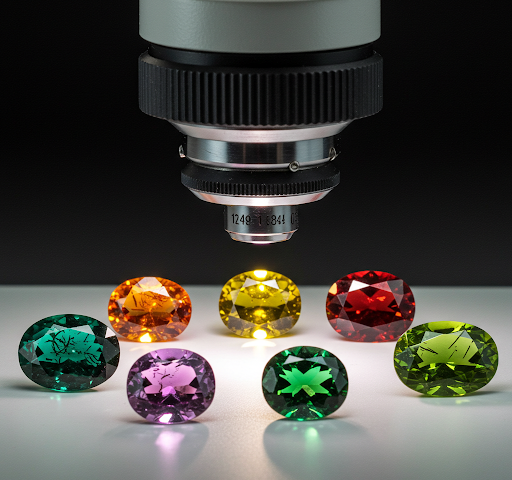
Gemstone Fluorescence: Glow in the Dark Gems
October 10, 2025
Jewelry Trends for Weddings 2025: Bridal Brilliance
October 13, 2025Hi friends, I’m Chuong Gems from Vietnam. Today, I’m excited to share with you my insights about gemstone identification microscopes – essential tools that reveal the hidden beauty and characteristics of precious stones.
The Role of Microscopes in Gemstone Identification
As a gemologist, I’ve learned that microscopes are absolutely crucial for proper gemstone identification. They allow us to examine internal features, inclusions, and surface characteristics that are impossible to see with the naked eye. These microscopic details often hold the key to determining a gem’s authenticity, origin, and quality.
Common Types of Microscopes in Gemology
Through my experience, I’ve worked with several types of microscopes, each serving specific purposes:
- Gemological Microscopes: These are specifically designed for examining gems, featuring darkfield illumination and various lighting options.
- Stereo Microscopes: Providing a three-dimensional view, perfect for examining surface features and inclusions.
- Digital Microscopes: Modern tools that allow for capturing and sharing high-resolution images of gemstone features.
Using Microscopes for Detail Detection
Let me share some practical tips I’ve learned for examining gemstones under microscopy:
- Proper Lighting: Always start with darkfield illumination, then adjust lighting angles to reveal different features.
- Systematic Approach: Examine the stone methodically, starting from the crown to the pavilion.
- Focus Control: Use fine focusing to examine different depth levels within the stone.
- Magnification Selection: Start with lower magnification (10x) and gradually increase as needed.
Microscopic Photography Techniques
Capturing what you see under the microscope is crucial for documentation. Here’s what I recommend:
- Camera Attachment: Use proper microscope camera adapters for stable imaging.
- Lighting Balance: Adjust illumination to avoid overexposure or dark spots.
- Multiple Angles: Document features from different perspectives.
- Focus Stacking: For deeper inclusions, consider taking multiple images at different focal points.
Choosing the Right Microscope
When selecting a microscope for gemstone identification, consider these essential factors:
- Magnification Range: Look for options between 10x and 60x magnification.
- Lighting Options: Ensure it has darkfield, brightfield, and oblique illumination capabilities.
- Build Quality: Invest in sturdy equipment that will last and maintain calibration.
- Budget Considerations: Balance quality with your needs and financial resources.
Remember, a microscope is more than just a tool – it’s your window into the microscopic world of gemstones. With proper knowledge and practice, you’ll discover amazing details that tell each stone’s unique story.
If you have any questions about microscopes or gemstone identification, feel free to reach out. I’m always happy to share my experience and help fellow gem enthusiasts on their journey.




